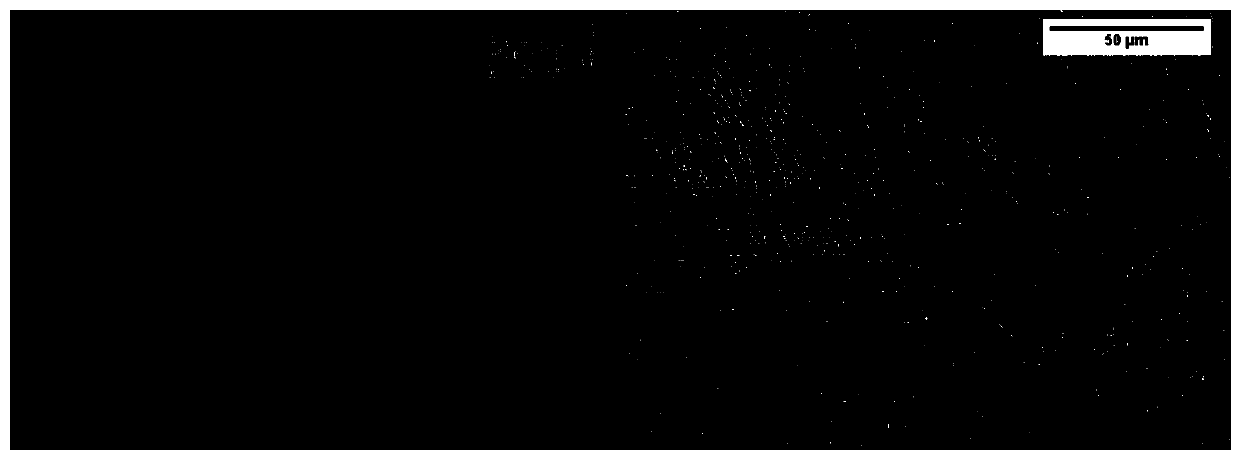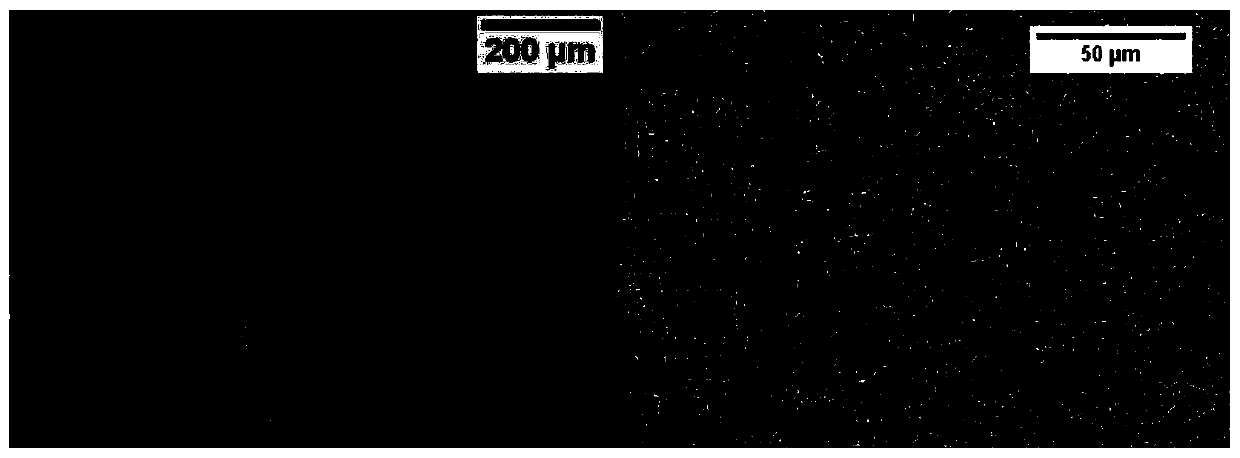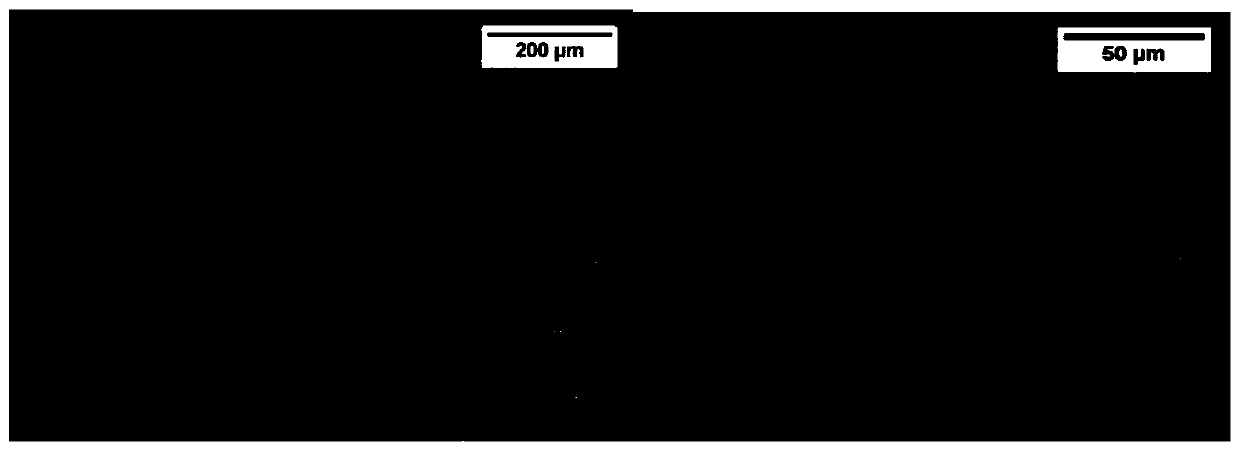Additive manufacturing method for reducing anisotropy and its b-added titanium alloy additive material
An additive manufacturing and anisotropic technology, which is applied in the field of B-added titanium alloy additive manufacturing materials, can solve the problems of weakening the strong plasticity of titanium alloys and the coarseness of the original β columnar grains of formed parts, so as to eliminate grain boundaries and eliminate the original β Columnar grain boundaries, effect of reducing anisotropy
- Summary
- Abstract
- Description
- Claims
- Application Information
AI Technical Summary
Problems solved by technology
Method used
Image
Examples
Embodiment 1
[0032] The mass proportion of B powder is controlled at 0.04%. Mix B powder and titanium alloy powder by mechanical powder mixing for 4 hours. The particle size of B powder is 20 μm, and the particle size of titanium alloy powder is 100 μm. Dry at 120°C in vacuum 9h; Then use the laser additive manufacturing device to perform laser cladding and molding on the above mixed powder under an argon protective atmosphere to obtain a shaped sample. The laser power is 180W, the laser spot diameter is 0.5mm, the scanning speed is 10mm / s, the powder feeding amount is 2.5g / min, the Z-axis lifting amount △Z=0.10mm, and the scanning distance is 0.2mm. Carry out wire cutting, polishing and corrosion treatment on the sample. Finally, the tissue was observed by optical microscope and scanning electron microscope, such as figure 2 As shown, the original columnar grain boundary of the sample obviously disappeared or weakened, and the α phase of the continuous grain boundary was broken and sepa...
Embodiment 2
[0034] The mass ratio of B powder is 0.05%. Mix B powder and titanium alloy powder by mechanical powder mixing for 3 hours. The particle size of B powder is 30 μm, and the particle size of titanium alloy powder is 150 μm. Dry at 120°C for 8 hours in vacuum ; and then use the laser additive manufacturing device to carry out laser cladding and molding of the above mixed powder in an argon protective atmosphere to obtain a shaped sample; then heat-treat the sample, wherein the sample is kept at 950 °C for 1 hour, and then Carry out air-cooling treatment, keep it warm at 560°C for 4 hours, and then carry out air-cooling treatment, the metallographic diagram of the obtained sample is as follows image 3 As shown, the original grain boundaries completely disappear, and the internal structure is uniform and fine lath α phase.
Embodiment 3
[0036] The mass ratio of B powder is 0.1%. Mix B powder and titanium alloy powder by ball milling for 2 hours. The particle size of B powder is 100 μm, and the particle size of titanium alloy powder is 200 μm. Dry in vacuum at 120°C for 8 hours. ; and then use the laser additive manufacturing device to carry out laser cladding and molding of the above mixed powder in an argon protective atmosphere to obtain a shaped sample; then heat treat the sample, wherein the sample is subjected to solution treatment, and the solution temperature is 970 ℃ for 2 hours, then air-cooled, and then subjected to aging treatment, the aging temperature is 600 ℃, the aging time is 6 hours, and then air-cooled to obtain a sample product.
PUM
| Property | Measurement | Unit |
|---|---|---|
| particle size | aaaaa | aaaaa |
| particle size | aaaaa | aaaaa |
| particle size | aaaaa | aaaaa |
Abstract
Description
Claims
Application Information
 Login to View More
Login to View More - R&D
- Intellectual Property
- Life Sciences
- Materials
- Tech Scout
- Unparalleled Data Quality
- Higher Quality Content
- 60% Fewer Hallucinations
Browse by: Latest US Patents, China's latest patents, Technical Efficacy Thesaurus, Application Domain, Technology Topic, Popular Technical Reports.
© 2025 PatSnap. All rights reserved.Legal|Privacy policy|Modern Slavery Act Transparency Statement|Sitemap|About US| Contact US: help@patsnap.com



